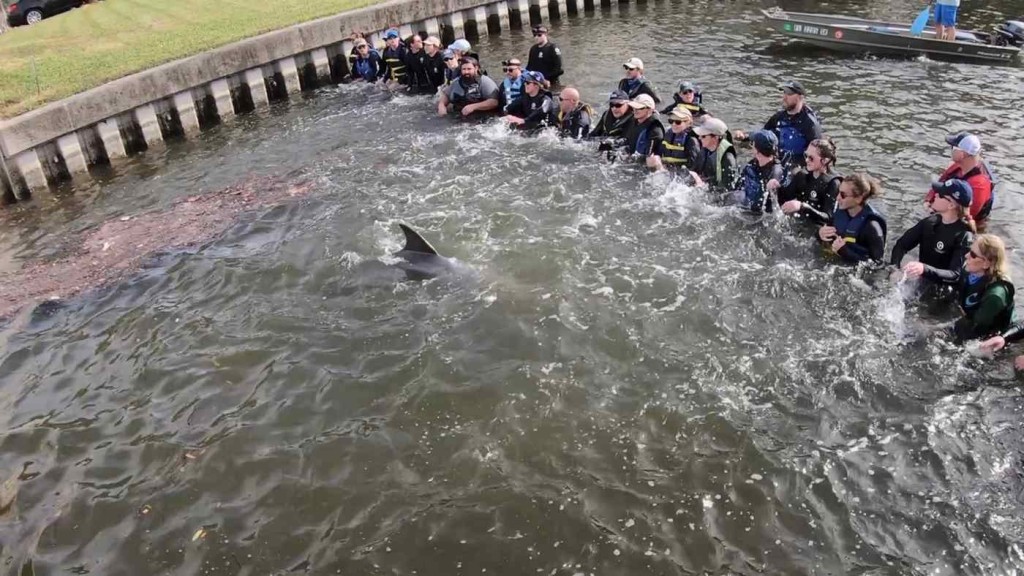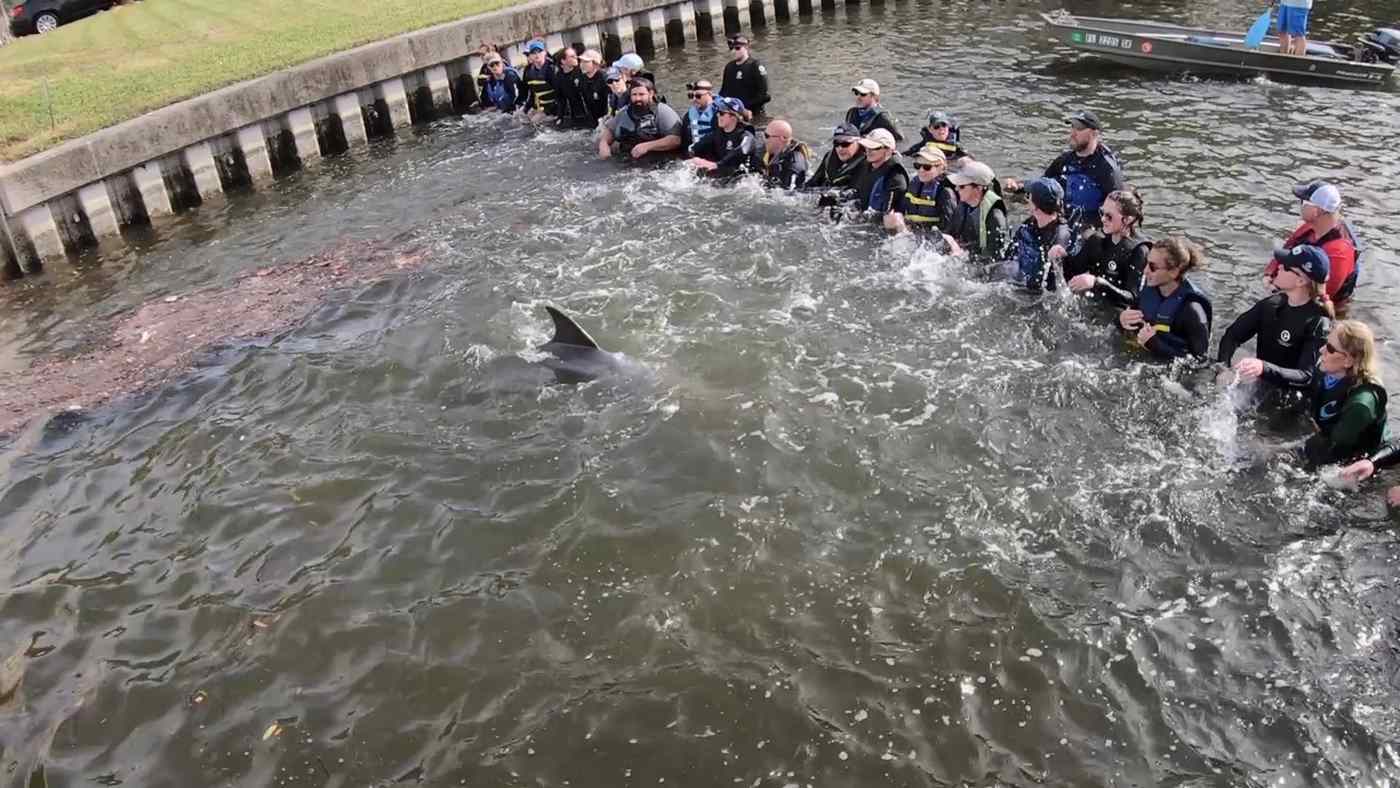
When a dolphin got lost and swam up a Florida canal, no less than 30 biologists and volunteers formed a human chain to block its passage further up the waterway.
Their efforts saw the dolphin flee the canal out into Tampa Bay, saving it from a life of losing its ability to fend for itself and eventually ending up as an aquarium resident.
Brittany Baldrica, a senior rescue biologist with Clearwater Marine Aquarium, got a call that a dolphin was hanging about in a canal in Clearwater, Florida. The caller was concerned that it was hurt or lost, as after four days, it had not moved beyond a small stretch of the artificial waterway.
The Marine Mammal Protection Act stipulates that feeding or harassing marine mammals like manatees, dolphins, or whales is illegal, however Baldrica had just recently rehabilitated a dolphin named Izzy who had been fed by humans after a boat strike left her stranded in a canal for so long that she forgot how to hunt.
She told a local Fox affiliate that following the call they monitored the dolphin for 18 days.
MORE FROM FLORIDA: Guy Finds $40,000 Diamond Ring Buried on Florida Beach and Tracks Down the Owner Who Broke into Tears
“He was behaviorally ok at that point and then upon talking to other people within the residency, they had said the animal may have been there for at least four days, so we were just concerned he got separated from other animals,” Baldrica said.
Eventually, Baldrica determined she needed to intervene. Last Wednesday she gathered a group of 28 biologists from the Clearwater Aquarium, the National Oceanic and Atmospheric Administration, and the Florida Fish and Wildlife Commission to enter the canal and form a “wall of sound” to encourage the dolphin to swim through a narrow culvert and out towards Tampa Bay.
RELATED: Watch Rescuers Form a Human Chain to Save Four Dolphins Trapped in Florida Canal
“The goal was to not put hands on the animal. The goal was to just be a barrier that was novel to the animal, so we wanted to create a physical barrier as well as an auditory barrier, so we had somebody behind us that was banging on a boat, revving their engine and then we were splashing the water and moving forward towards the animal, so we were giving the animal the option to swim through the bridge on its own,” Baldrica said.
“We’re thankful to the residents in the area who worked with us to help protect the animal from harassment and provided access to their property while we monitored and rescued the animal,” CMA said in a press release.
WATCH the story below…
CHAIN This Story Of A Human Auditory Wall Onto Your Friends…




















